The Reichstag, the seat of the German parliament, is one of Berlin’s most historic landmarks. The building, which is located close to the Brandenburg Gate, was renovated after German reunification and now features a striking glass dome.
Construction
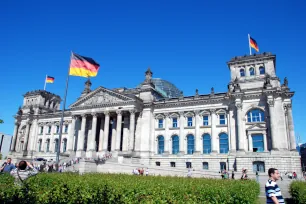
After the founding of the German Empire in 1871, there was a need for a large parliamentary building in Berlin. A competition was held and out of 183 submissions, a design by Paul Wallot was chosen.
The German architect created an imposing Neo-Renaissance building, 137 meters long and 97 meters wide (450 x 318 ft). Its design and in particular the magnificent iron dome – at the time a technological masterpiece – was lauded by all.
The building was constructed between 1884 and 1894, mainly funded with wartime reparation money from France, a result of Prussia’s defeat of France in 1871. The famous inscription ‘Dem Deutschen Volke’ (To the German People) was added later, in 1916, by Emperor William II. The bronze letters were cast from seized French cannons.
The Reichstag Fire
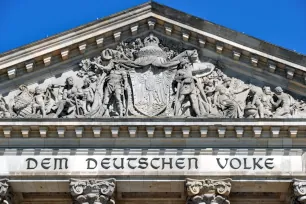
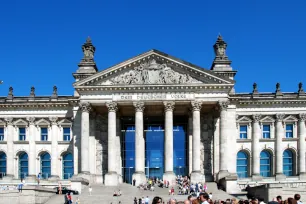
The Reichstag, short for Reichstagsgebäude, was built as a symbol of the newly created German Empire, but the parliament that assembled here had little say in matters; most of the legislative power was in the hands of the chancellor and – until 1918 – the emperor.
The Reichstag played a significant part in Hitler’s ascend to power. In February 1933 a fire broke out in the building, destroying much of the Reichstag. It is to date still unclear who started the fire, but a Dutch ex-communist, Marius van der Lubbe, was charged with the crime and sentenced to death after a show trial. The incident gave a boost to Hitler, at the time chancellor, who blamed the Communists. His party, the NSDAP, gained almost 44% of the votes during the following elections, and he was able to pass an amendment that would give him absolute powers. The Reichstag building had now become a mere symbol of a powerless parliament. The Nazis themselves never even used the Reichstag for parliamentary sessions.
The building was not repaired and was damaged even more at the end of the Second World War, when Soviet troops entered Berlin. The picture of a Red Army Soldier raising the Soviet flag on the Reichstag is one of the most famous twentieth-century images, and symbolized Germany’s defeat.
The Reichstag after the War
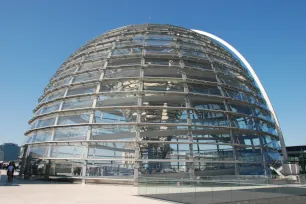
After the Second World War, the Reichstag building ended up in West Berlin, right near the border with East Berlin. The iconic dome was demolished in 1954 but the remainder of the building was reconstructed between 1958 and 1972.
During Berlin’s division, the West German parliament assembled here once a year as a way to indicate that Bonn was only a temporary capital. The building stood otherwise mostly empty, and plans from the 1970s to use the building as a museum were never realized. In 1991, shortly after reunification, the decision was made to move the Bundestag (Germany’s parliament) from Bonn back to Berlin.
The Glass-domed Reichstag
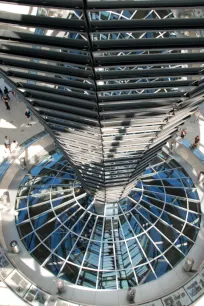
A first meeting of the parliament of the reunified Germany took place as early as on October 4, 1990, but it was clear that a significant renovation of the building was needed before the parliament could move here permanently. To this end an architectural competition was launched which was won by Norman Foster. He decided to keep the exterior intact as a reminder of the past. The interior was completely stripped and modernized. Construction started in 1995 and the Bundestag moved in September 1999.
The highlight of the new Reichstag is its striking glass dome. Foster’s original plans did not include a dome; it was only added at the insistence of the German government. At first the subject of much controversy, the dome, which is supported by a mirrored column, has become one of the city’s most recognized landmarks. It is open to visitors, who can look onto the plenary hall below. You can walk onto the roof of the building for views over the area or, even better, ascend a helical ramp that brings you to a viewing deck with unique views over the city.

